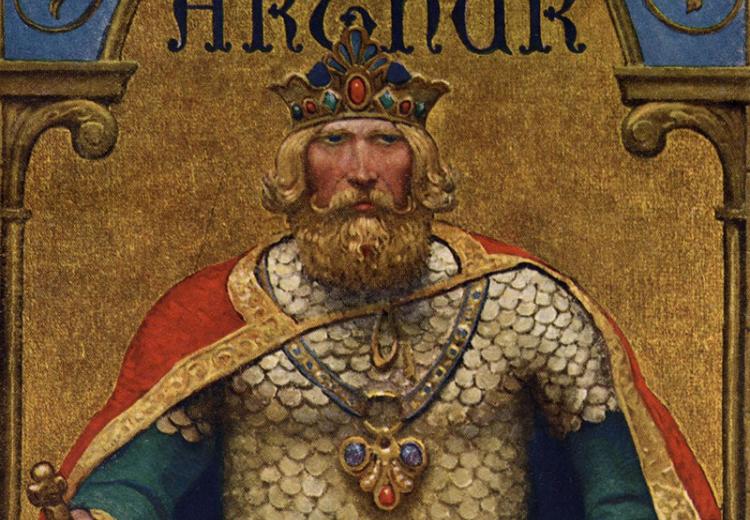Exploring Arthurian Legend

Title page of The Boy's King Arthur.
Exploring Arthurian Legend
1) Work in groups to annotate these timelines by adding non-Arthurian events with which you may be already familiar (e.g., the reign of Charlemagne, the Norman Conquest, the signing of the Magna Carta, the Crusades). You can also use the following maps to contextualize Medieval geography. Print out the three maps—Medieval Cities, Physical Geography, and Regional Names—from the Medieval Sourcebook Medieval Map Quiz. Work with a partner to complete the three maps.
2) Consider these two early accounts of Arthur:
- A short extract from De Excidio Britanniae by the 6th-century British monk Gildas
- A brief extract from Historia Brittonum, by the 9th-century British historian Nennius, where Arthur is already passing into legend (see in particular Chapter 56)
- What does Arthur seem to stand for in these narratives?
- What can we infer about the societies in which these historians lived from the ways they present Arthur and his actions?
3) Using the following websites, research important figures or themes—such as feudal loyalty, courtly love, chivalry, the Holy Grail—in Arthurian legends and romances. Your teacher may direct you to consult other resources as well.
- Camelot Project
- Labyrinth project
- ORB, Online Reference Book for Medieval Studies
- Internet Medieval Sourcebook
4) Read the poem and consider the following questions:
Alfred, Lord Tennyson "The Lady of Shalott"
- What happens in the poem? Describe the setting, list the characters, and summarize the action.
- Examine the form of the poem. Describe the stanza pattern. How many lines are in each stanza? What is the rhyme scheme of each stanza? What is the metric structure of each stanza? Why is the poem divided into sections?
- How does Tennyson use repetition in the poem? To what effect?
- Who is the main character in the poem? How do we know? Why she is not named in this version of the story?
- Scholars have suggested that this poem, like many of the versions of the Arthurian legends, is more than another retelling of the same old story. The Lady represents the artist, high above ordinary life, practicing her art and observing life but never mixing in it directly. When she is drawn into real life, her art is destroyed and she dies. Relate this reading of the story to other possible interpretations of the story. What does this interpretation of the story tell us about Victorian views of art and artists?
5) Consider the following questions while exploring the different versions of the Lancelot and Elaine story:
- Malory's Morte D'Arthur Book XVII, Chapters ix-xx
- Alfred, Lord Tennyson's "Lancelot and Elaine" from Idylls of the King
- Sydney Fowler Wright's "The Ballad of Elaine"
- T.Gilbert's King Arthur's Knights Chapter VIII "OF SIR LANCELOT AND THE FAIR MAID OF ASTOLAT" via the EDSITEment-reviewed Internet Public Library.
- T.H. White's Once and Future King Chapters 10 - 16. This version is not available online and will need to be checked out of the library.
- What political and historical events of the period in which your version was written may have colored the way the events and characters are portrayed?
- Who is the audience for your version of the story? How does the intended audience of the story impact the telling of the story?
- What does your version tell us about cultural attitudes toward physical violence, fighting and war?
- What does your version tell us about the position of women in the culture?
- What does your version tell us about sexual mores of the time?
- What does your version tell us about parent/child relations of the time? Consider Elaine's relationships with the men in her life, Lancelot, her father and her son. How do important people in the story respond to Elaine's child?
